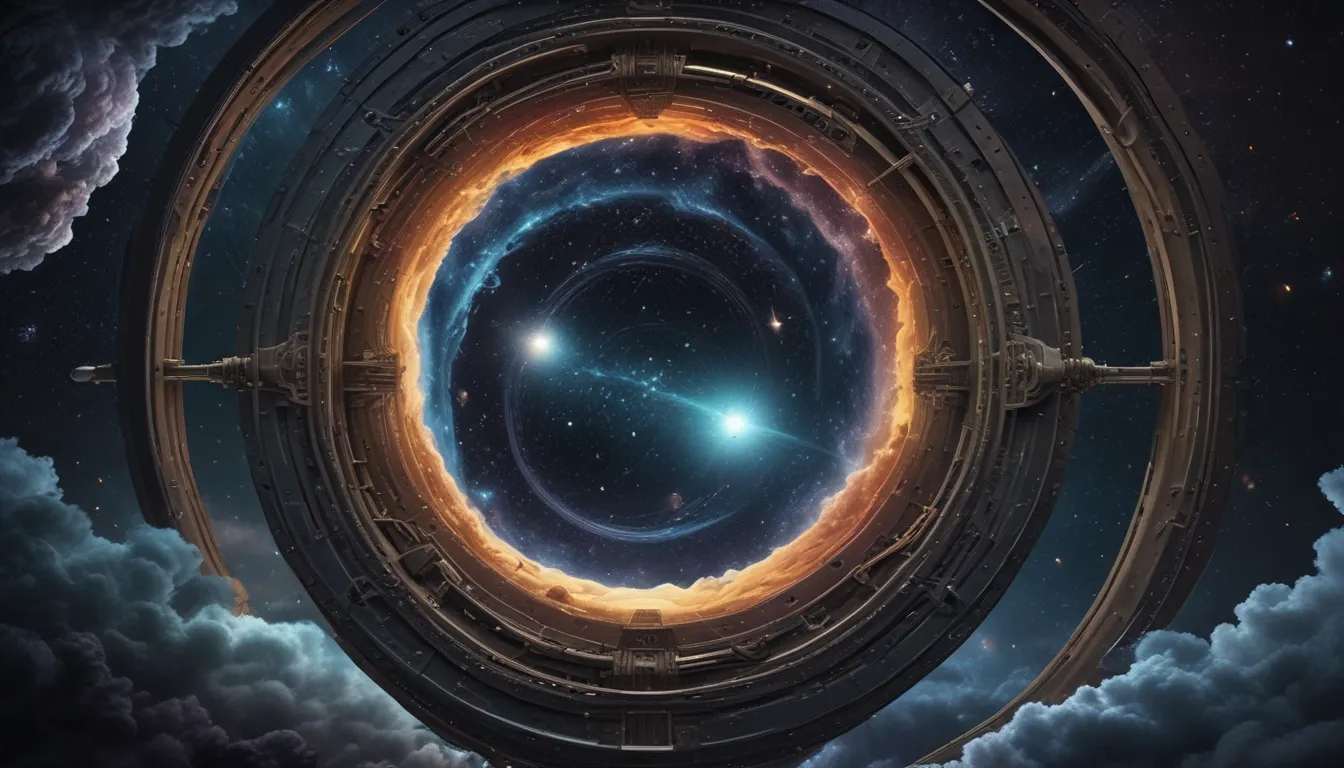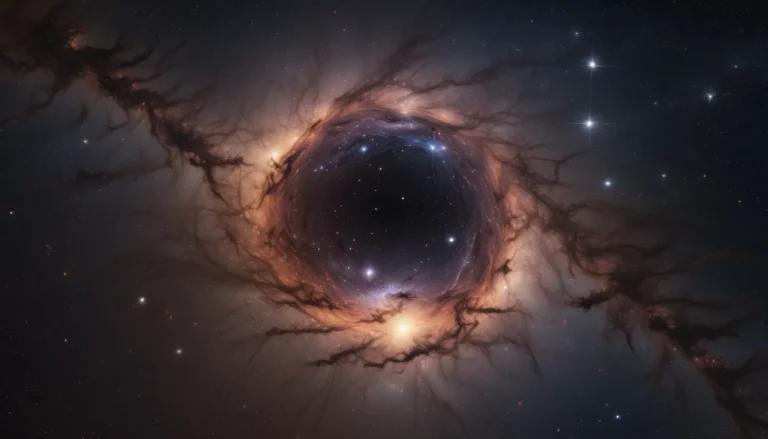The pictures we use in our articles might not show exactly what the words say. We choose these pictures to make you interested in reading more. The pictures work together with the words but don’t take their place. The words still tell you the important facts.
Astronomical observations have captivated humanity for centuries, offering us a glimpse into the vastness and intricacies of the cosmos. From the exploration of planets and galaxies to the study of celestial bodies and phenomena, these observations have expanded our knowledge and deepened our understanding of the universe.
In this article, we will delve into 16 extraordinary facts about astronomical observations that will leave you in awe of the wonders that lie beyond our planet. Prepare to embark on a journey through the cosmos and discover some truly mind-blowing facts about our universe.
The Universe Unveiled: Key Takeaways
- The universe is teeming with wonders, from the mesmerizing images captured by the Hubble Space Telescope to the identification of thousands of exoplanets. Astronomical observations continue to reveal the mysteries of our cosmic existence.
- By examining celestial objects using various telescopes, astronomers have confirmed the presence of black holes, dark matter, and even detected gravitational waves. These observations offer vital insights into the composition and evolution of the universe.
Witnessing the Marvels of Space with the Hubble Space Telescope
The Hubble Space Telescope, launched in 1990, has mesmerized us with breathtaking images of distant galaxies, nebulae, and other celestial objects. Its ability to observe the universe in ultraviolet, visible, and infrared light has revolutionized our understanding of the cosmos.
Discovering Other Worlds: The Existence of Exoplanets
Thanks to advancements in observational techniques, astronomers have uncovered thousands of exoplanets orbiting stars beyond our solar system. These findings have ignited the possibility of finding Earth-like planets capable of sustaining life.
Unveiling the Past: Cosmic Microwave Background Radiation
The Cosmic Microwave Background (CMB) radiation is a faint glow that spans the entire universe. It serves as evidence of the Big Bang, supporting the theory of cosmic inflation and the formation of the universe.
The Enigmatic Black Holes at Galaxy Centers
Astronomers have observed the gravitational influence of black holes at the cores of galaxies, including our Milky Way. These colossal cosmic entities possess an intense gravitational pull that not even light can escape.
Illuminating the Universe’s Expansion: Supernovae Observations
The study of supernovae brightness and distance has led to the revelation that the universe is expanding at an accelerating pace. This discovery is a significant milestone in modern cosmology.
Delving into the Universe’s Mysteries with Radio Telescopes
By detecting radio waves emitted by celestial objects, radio telescopes have offered crucial insights into phenomena like pulsars, quasars, and cosmic microwave background radiation.
Optical Telescopes: Mapping the Depths of Space
Equipped with lenses and mirrors, optical telescopes have played a pivotal role in observing and studying the light emitted by distant galaxies, stars, and other celestial bodies. They have been vital in enhancing our comprehension of the universe.
The Landmark Image: The First Black Hole Captured by the Event Horizon Telescope
In April 2019, the Event Horizon Telescope collaboration unveiled the first direct image of a supermassive black hole in the galaxy Messier 87. This groundbreaking achievement provided visual confirmation of these enigmatic cosmic entities.
Shedding Light on the Dark Side: Dark Matter and Dark Energy
Through observations of the universe's structure and expansion, scientists have inferred the existence of dark matter and dark energy – enigmatic components that constitute the majority of the universe's mass and energy.
Unveiling the High-Energy Universe with the Chandra X-ray Observatory
Detecting X-rays from celestial objects, the Chandra X-ray Observatory has uncovered violent and energetic phenomena in the universe, including supernova remnants, black hole accretion disks, and active galactic nuclei.
A New Era: Gravitational Waves Detected
The groundbreaking discovery of gravitational waves in 2015 confirmed Albert Einstein's general theory of relativity and provided a new avenue for exploring the cosmos. These waves are ripples in spacetime caused by massive object collisions.
Expanding Perspectives: Space-Based Observatories
Observatories like the Spitzer Space Telescope and the upcoming James Webb Space Telescope have enabled observations across different light wavelengths, offering a comprehensive view of celestial phenomena.
Estimating the Age of the Universe with Astronomical Observations
By studying cosmic microwave background radiation and galaxy distribution, scientists have approximated the universe's age at around 13.8 billion years, providing crucial insights into cosmic evolution.
Exploring Potentially Habitable Worlds: The Kepler Space Telescope’s Discoveries
The Kepler Space Telescope, launched in 2009, identified thousands of potential exoplanets, some residing in the habitable zone where conditions may support liquid water and, potentially, life.
Confirming the Existence of Neutron Stars and Pulsars
Through the study of electromagnetic radiation emitted by rapidly rotating neutron stars known as pulsars, astronomers have validated the existence of these dense celestial remnants of supernova explosions.
Peering into the Cosmic Origins: Insights from Cosmic Microwave Background Radiation
Analyzing patterns and fluctuations in cosmic microwave background radiation has provided scientists with insights into the early universe's composition, temperature, and evolution, offering a window into cosmic origins.
These 16 extraordinary facts about astronomical observations offer just a glimpse of the vast discoveries we have made about the universe. By gazing into space, astronomers unravel the secrets of our cosmic existence, nurturing our curiosity and expanding our knowledge of the cosmos.
Embarking on an Endless Discovery Journey
In conclusion, astronomical observations have bestowed us with remarkable insights into the universe's vastness and intricacies. From exoplanet discoveries to unraveling black hole mysteries, these observations have transformed our comprehension of space and our role within it.
With advancing technology and the dedication of astronomers, we continue to uncover extraordinary facts about the cosmos. Each observation propels us closer to unveiling the universe's secrets and broadening our understanding of its marvels.
As we delve deeper into astronomy, the horizon brims with untold discoveries awaiting us. The future of astronomical observations promises further astonishing revelations, propelling us toward new frontiers of exploration and comprehension.
Exploring the Cosmos: Frequently Asked Questions
- Q: How do astronomers observe distant celestial objects?
-
A: Astronomers employ instruments like telescopes and satellites to capture different forms of electromagnetic radiation emitted by distant objects, such as visible light, radio waves, and X-rays, analyzing the data to glean insights into their properties.
-
Q: Can astronomical observations aid in understanding the universe's origins?
-
A: Indeed, observational evidence is pivotal in comprehending the universe's beginnings. Cosmic microwave background radiation observations, for instance, underpin the Big Bang theory's explanation of the universe's birth and evolution.
-
Q: What remarkable discoveries have resulted from astronomical observations?
-
A: Astronomical observations have led to a myriad of exhilarating discoveries, from identifying exoplanets and detecting gravitational waves to uncovering supermassive black holes and elucidating dark matter and dark energy's roles in the cosmos.
-
Q: How have technological advances enhanced astronomical observations?
-
A: Technological progress has significantly bolstered astronomical observations. Development of large ground-based telescopes, space observatories like Hubble, and advanced image processing techniques have enabled clearer and more detailed images, fostering groundbreaking discoveries and deeper cosmic understanding.
-
Q: Can individuals partake in astronomical observations?
- A: While professional astronomers conduct most observations, avenues exist for amateur astronomers and citizen scientists to contribute. They can assist in observing meteor showers, variable stars, and even discovering new celestial bodies. Online platforms also offer public engagement opportunities in astronomical research.
Astronomical observations serve as windows to a realm of wonders, unveiling breathtaking marvels across the universe. From distant galaxies to intriguing exoplanets, astronomers persistently explore the cosmos, unraveling its most extraordinary secrets. Join us on this cosmic voyage as we venture into the depths of space, marveling at the incredible discoveries made feasible by committed astronomers and cutting-edge technology. Prepare to be awestruck by the sheer magnificence of our universe!
Your Feedback Matters!
Our mission to provide credible and engaging content is core to our ethos. Each fact on our platform is contributed by real users like you, enriching our collective knowledge with diverse insights. Our dedicated editors rigorously review each submission, ensuring that the facts we present are not only captivating but also reliable. Trust in our commitment to quality and authenticity as you traverse the cosmos with us.
By focusing on key facts and organizing them into informative sections, we've crafted an engaging and comprehensive guide to the wonders of astronomical observations. This rewrite aims to captivate readers with fascinating discoveries about our universe while maintaining a friendly and educational tone. Remember, the cosmos offers endless mysteries waiting to be uncovered – keep exploring!






